Idea by
Damian Sobol Turina
Call for ideas 2019
RIFARM 2050 - Life after port
RIFARM 2050 - Life after port
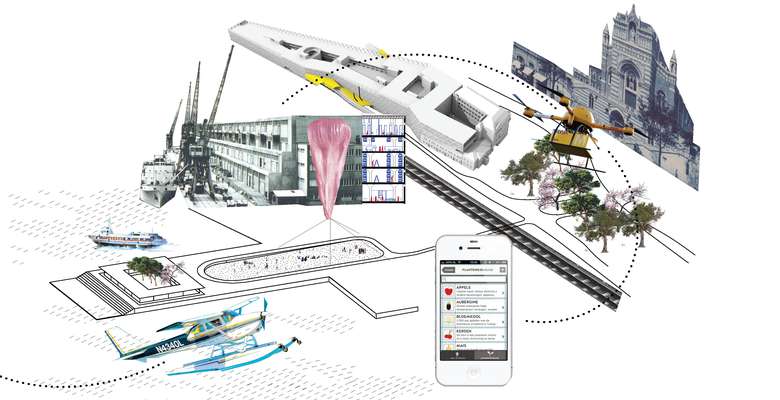
- Systemic changes
Project deals with the revitalization of harbor basin in Rijeka, Croatia. Once the industrial center and the largest port in Yugoslavia, port of Rijeka today is the unused leftover from the 2nd Industrial revolution. The aim of the project is to find the new narrative for re-development that would place Rijeka on the map of technological and social changes in the 21st century. Since the 1700s, the shipping industry was the main driver for coastal development, but thesis explores the possibility of large-scale food and energy production inside the abandoned infrastructure. The hypothesis assumes that in times of climate change, population growth, lack of natural resources and new digital technologies, food and energy production in urban areas will becomes necessity. With the intersection of the global threat and local conditions, projects offers a solution for incorporation of large industrial area back into the urban fabric, while offering the solution for the emerging food crisis.
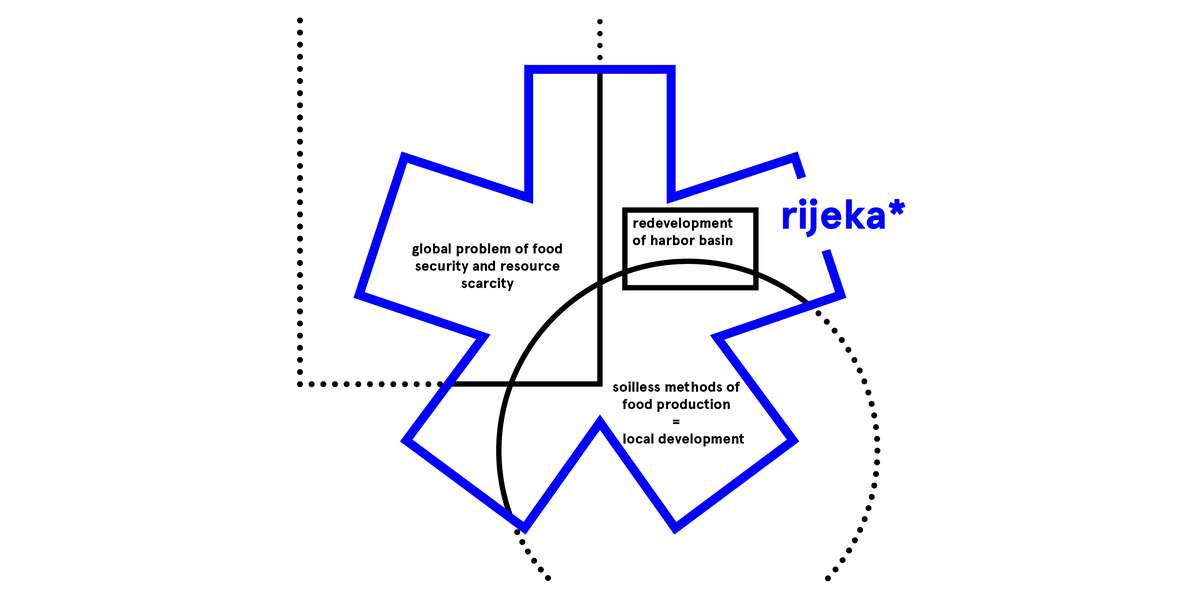
The working hypothesis assumes that in times of climate change, population growth, lack of natural resources and new digital technologies, food production in urban areas will becomes necessity. With the intersection of the global threat and local conditions, projects offers a solution for incorporation of large industrial area back into the urban fabric, while offering the solution for the emerging food crisis.
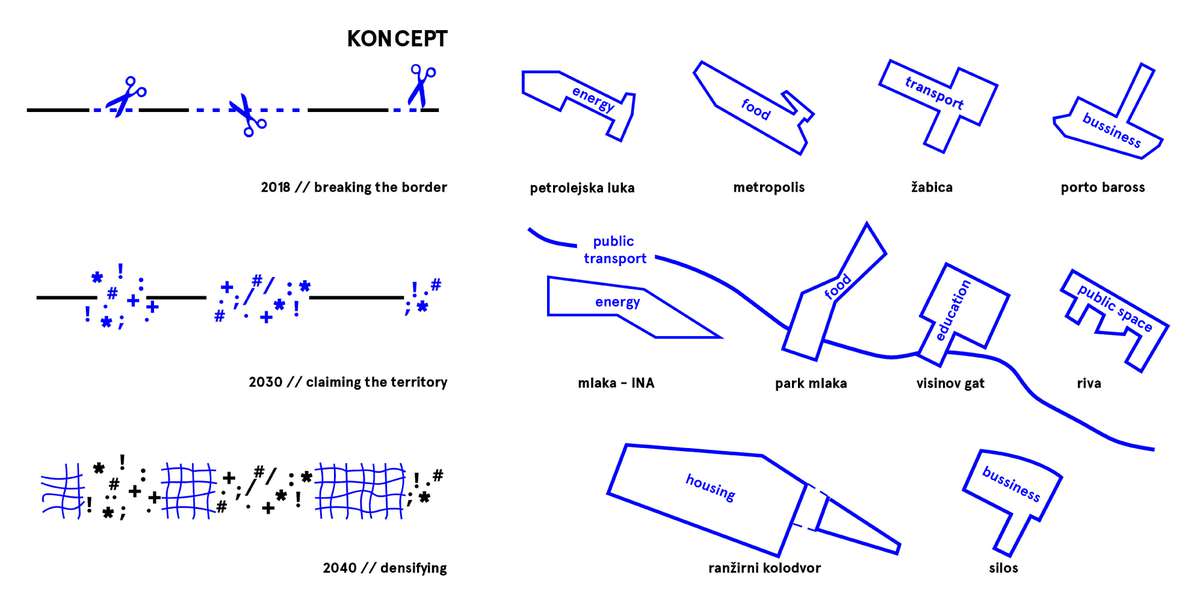
Plan is made of 11 different projects divided into 3 phases. First phase is thematizing severed waterfront which is being brought back in four critical points (=projects). Second phase is adding the urban tissue around the areas processed in the first phase, while last step is densifying the whole port area and reconnecting with the existing city.
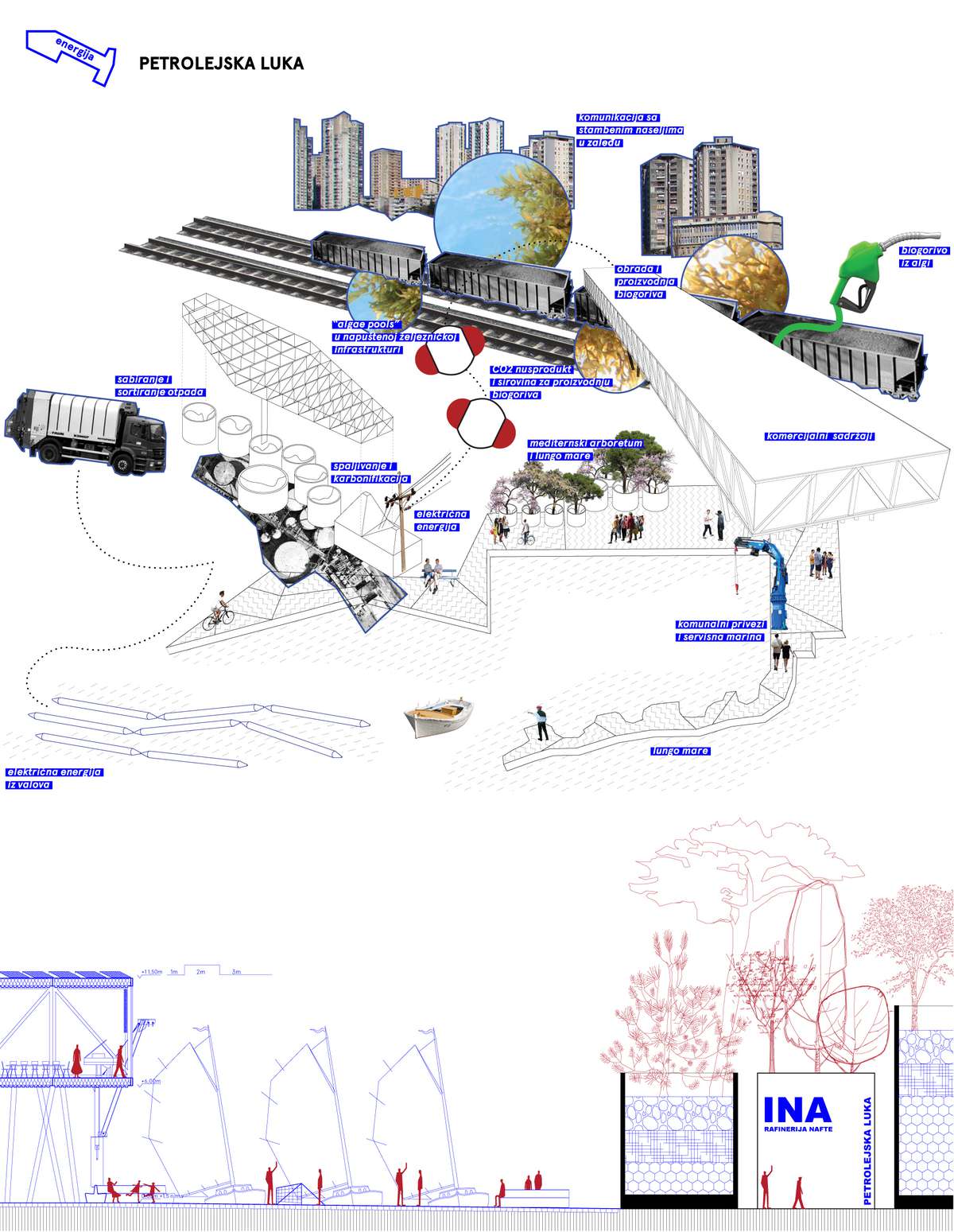
Ex. petroleum harbor becomes a new energy center where city generates energy using sea, waste, and algae pools in unused railroad infrastructure. Project abolishes traditional land use zoning, allowing public services such as arboretum and waterfront along with the industrial processes.
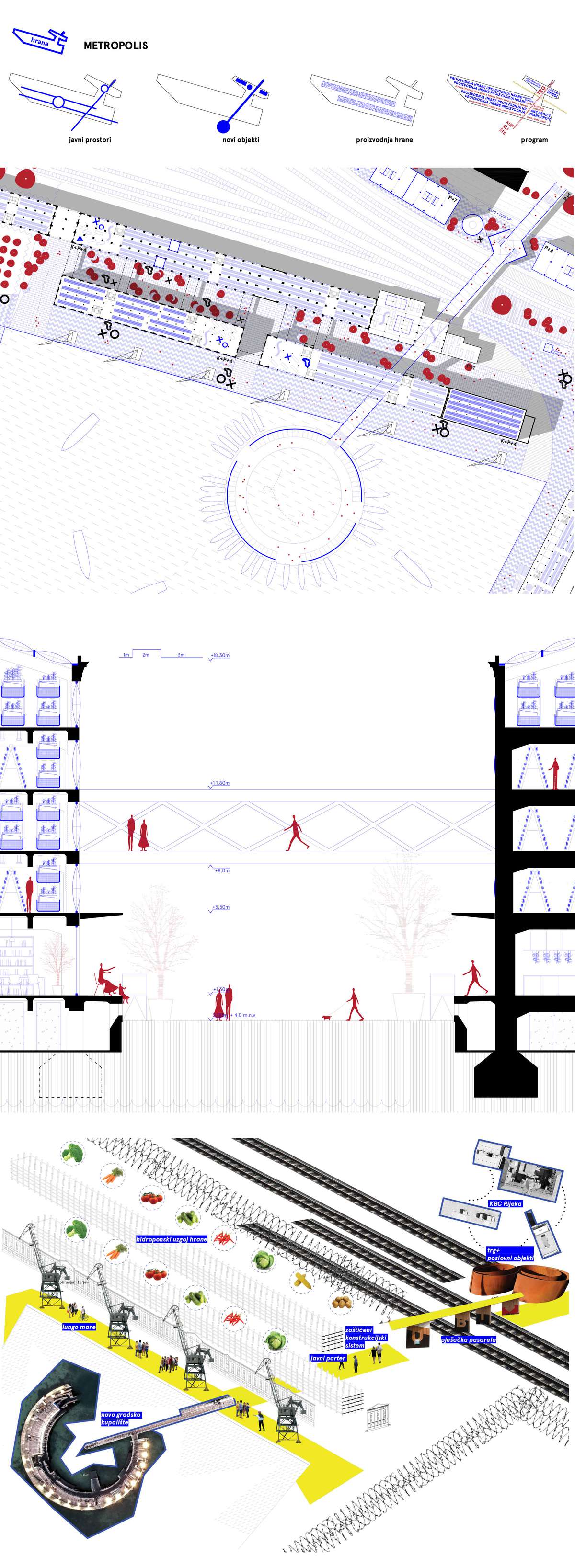
Largest port complex - Metropolis, spans over 55,000m2 of indoor space is re-purposed for the soil-less food production using systems for hydroponic growth of plants. Objects are repurposed, and while highly modernized on the upper floors, ground floors offers a public space with pedestrian bridge which connects existing city with new public sea bath.
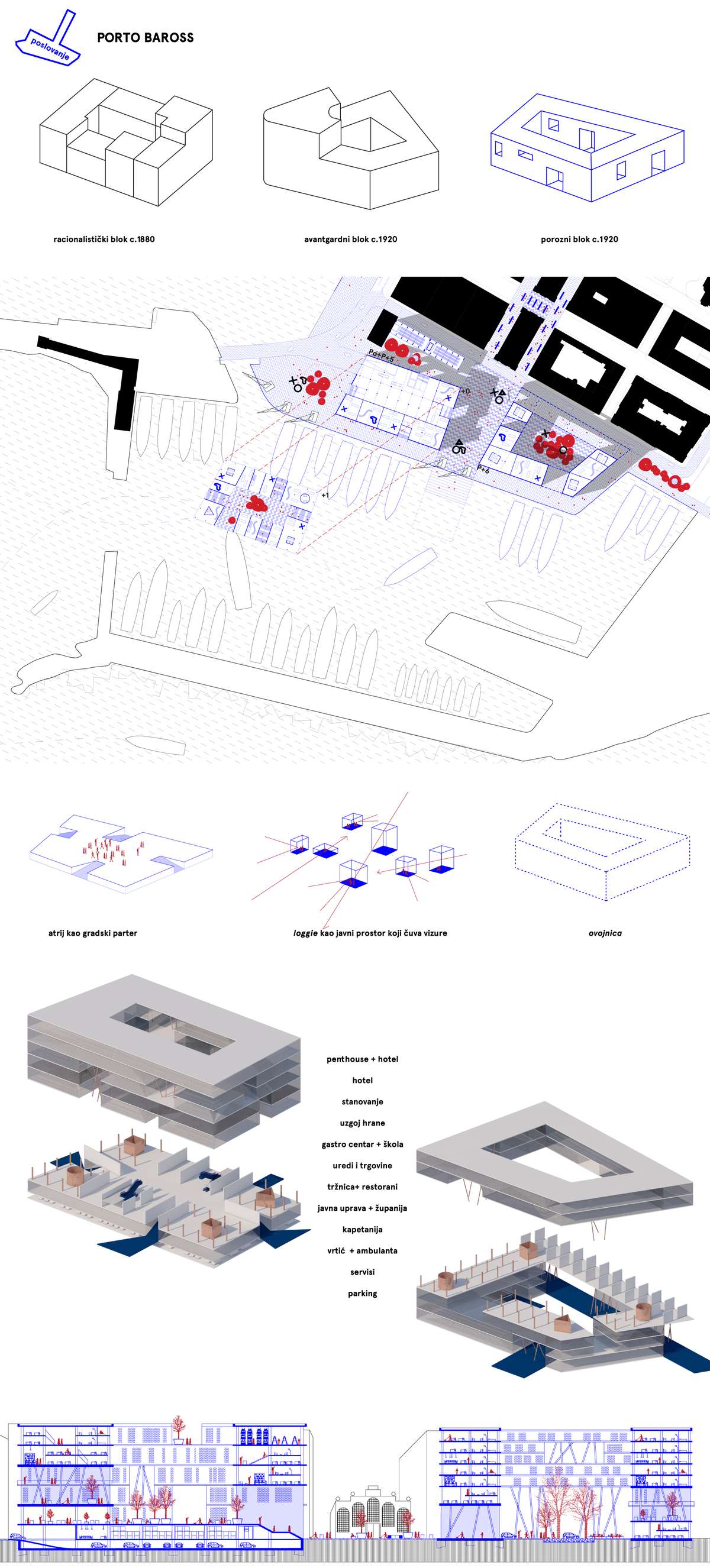
Historic area of Porto Baross harbors a highly commercial scenario. New marina for charter boats, together with the public services like schools, market, administrative offices and housing is placed at the edge of protected historic development. It serves as a urbanistic accent to the undefined stretch, while making the existing urban tissue more vibrant and inviting.
RIFARM 2050 - Life after port
RIFARM 2050 - Life after port

- Systemic changes
Project deals with the revitalization of harbor basin in Rijeka, Croatia. Once the industrial center and the largest port in Yugoslavia, port of Rijeka today is the unused leftover from the 2nd Industrial revolution. The aim of the project is to find the new narrative for re-development that would place Rijeka on the map of technological and social changes in the 21st century. Since the 1700s, the shipping industry was the main driver for coastal development, but thesis explores the possibility of large-scale food and energy production inside the abandoned infrastructure. The hypothesis assumes that in times of climate change, population growth, lack of natural resources and new digital technologies, food and energy production in urban areas will becomes necessity. With the intersection of the global threat and local conditions, projects offers a solution for incorporation of large industrial area back into the urban fabric, while offering the solution for the emerging food crisis.
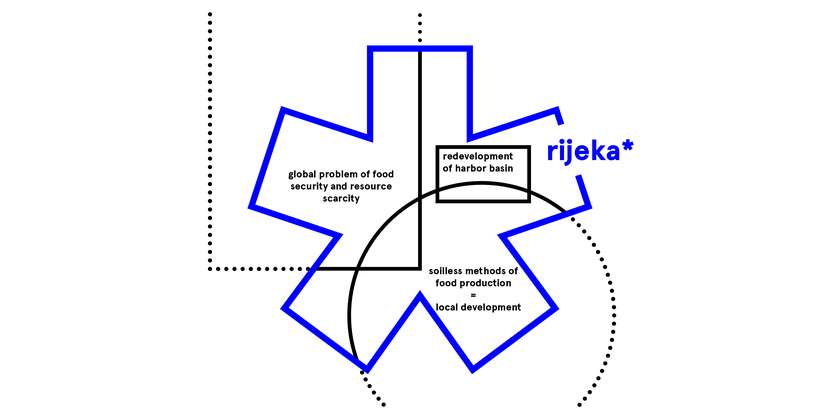
The working hypothesis assumes that in times of climate change, population growth, lack of natural resources and new digital technologies, food production in urban areas will becomes necessity. With the intersection of the global threat and local conditions, projects offers a solution for incorporation of large industrial area back into the urban fabric, while offering the solution for the emerging food crisis.
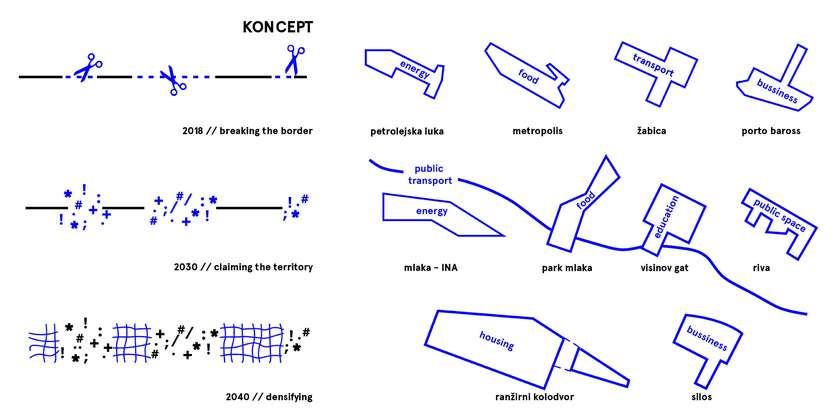
Plan is made of 11 different projects divided into 3 phases. First phase is thematizing severed waterfront which is being brought back in four critical points (=projects). Second phase is adding the urban tissue around the areas processed in the first phase, while last step is densifying the whole port area and reconnecting with the existing city.
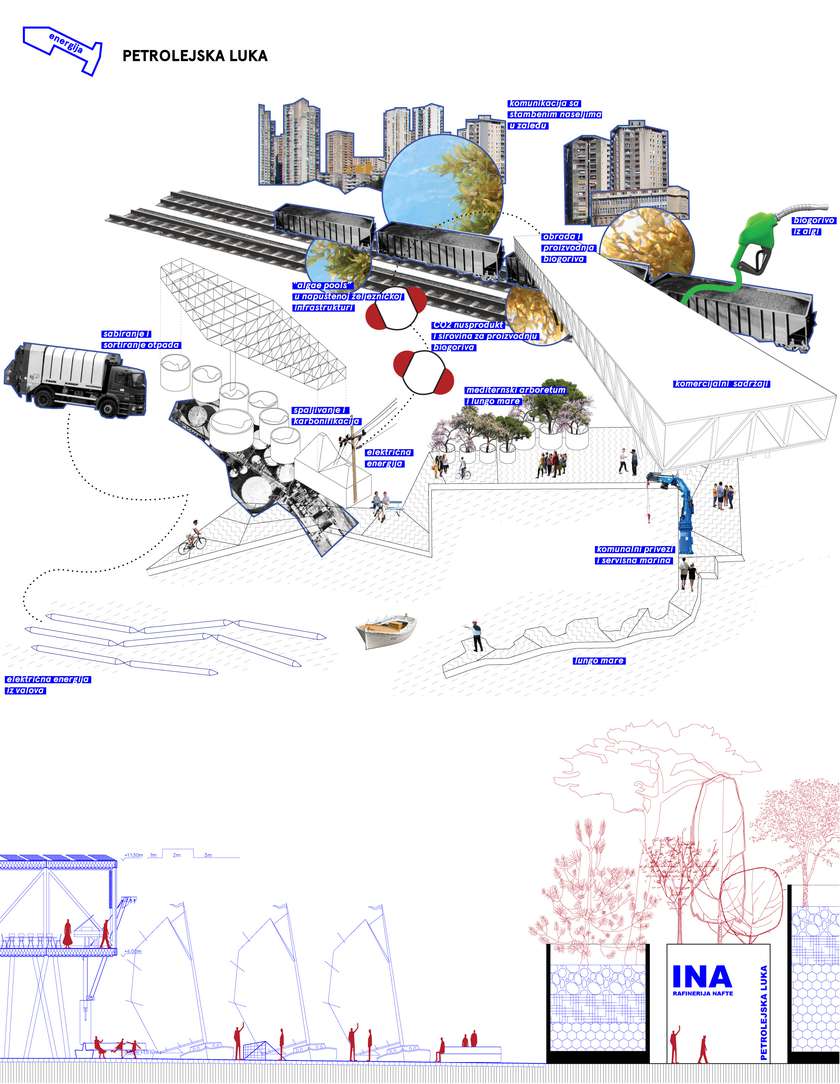
Ex. petroleum harbor becomes a new energy center where city generates energy using sea, waste, and algae pools in unused railroad infrastructure. Project abolishes traditional land use zoning, allowing public services such as arboretum and waterfront along with the industrial processes.
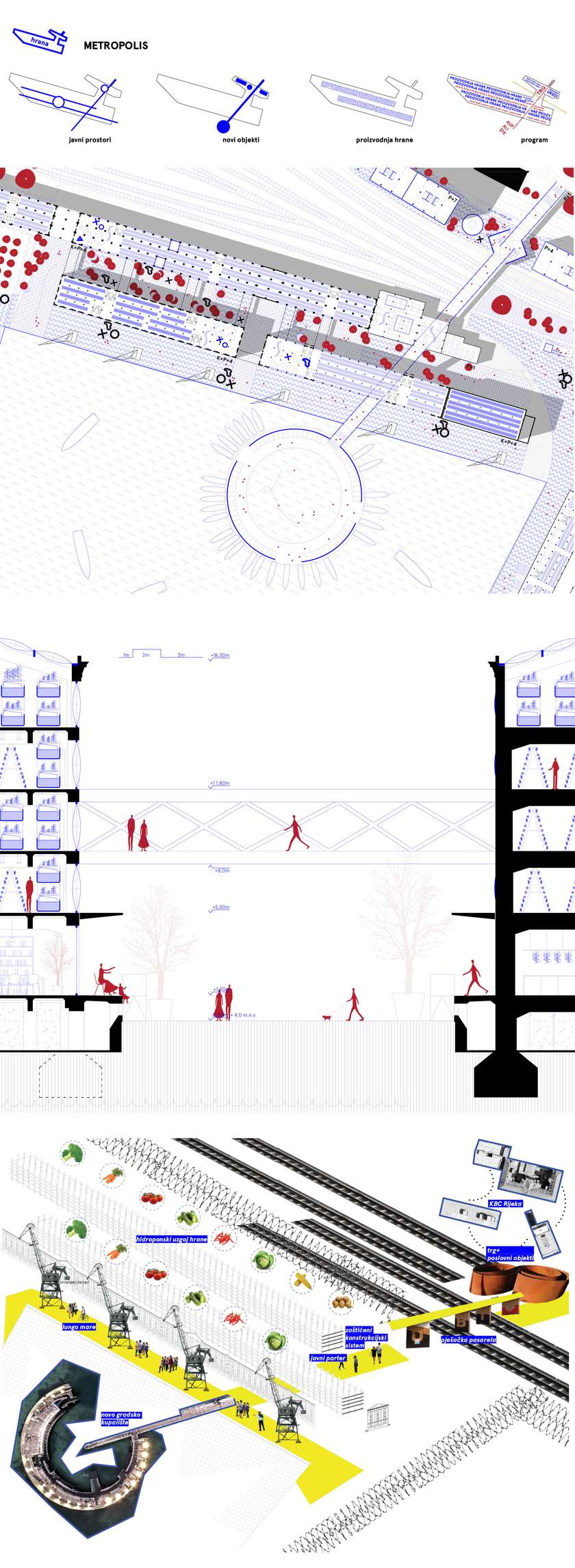
Largest port complex - Metropolis, spans over 55,000m2 of indoor space is re-purposed for the soil-less food production using systems for hydroponic growth of plants. Objects are repurposed, and while highly modernized on the upper floors, ground floors offers a public space with pedestrian bridge which connects existing city with new public sea bath.
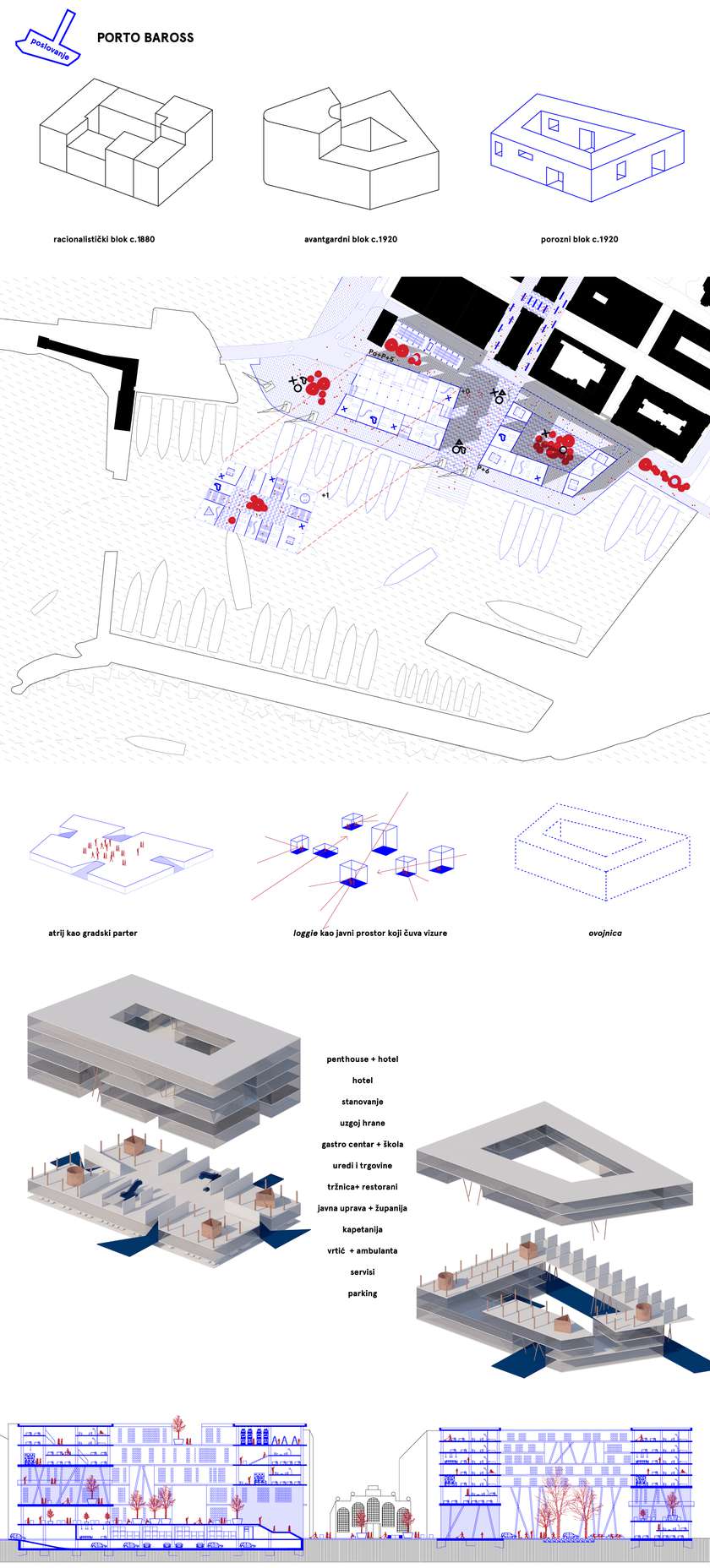
Historic area of Porto Baross harbors a highly commercial scenario. New marina for charter boats, together with the public services like schools, market, administrative offices and housing is placed at the edge of protected historic development. It serves as a urbanistic accent to the undefined stretch, while making the existing urban tissue more vibrant and inviting.